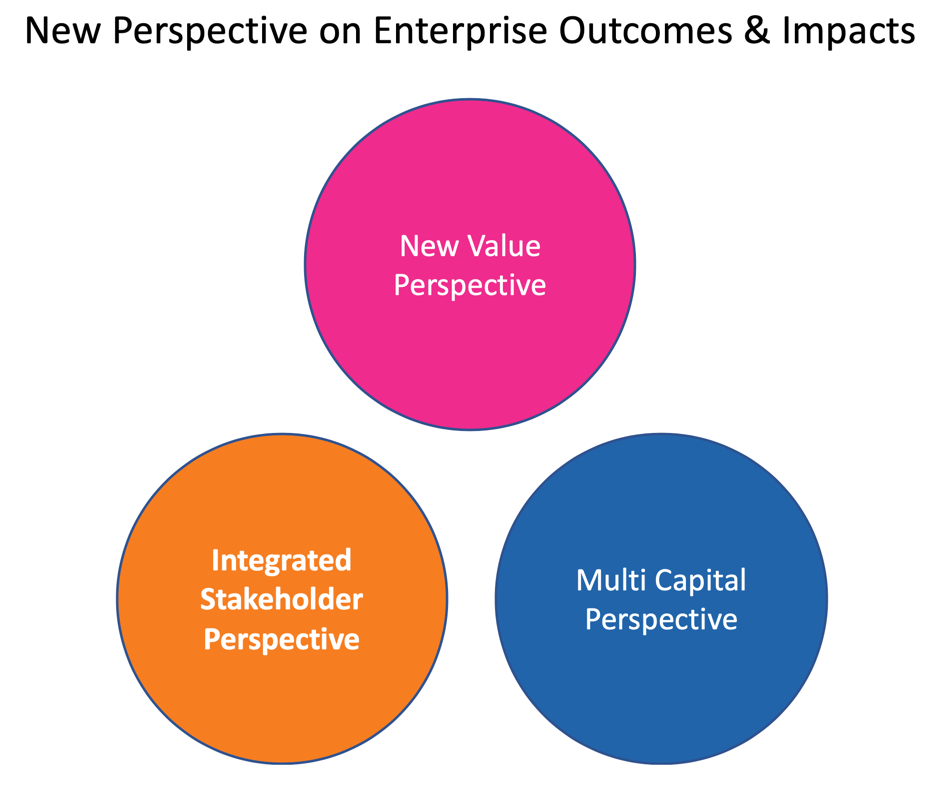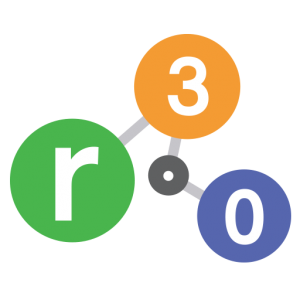
Applying these new perspectives to Vision, Decision Making and Action for flourishing and improved well-being.
For me the combination of integrated stakeholder view, capital types, and how they integrate with value creation and destruction provides a huge opportunity to broaden our thinking and actions on flourishing and ultimately improved well-being for all.
Integrated Stakeholder View
Integrated stakeholder view means no matter what our context (individual, team, enterprise, community…) our decisions and actions take into account understanding, participation, and impact of all stakeholders that can potentially be touch by our activities. The current stakeholder list I use is:
- ourselves / individuals
- groups / families / teams
- clients
- employees
- suppliers and partners
- owners and investors
- community / towns / city
- region
- province / state
- country
- world / society
- planet
The literature identifies the primary message of integrated stakeholder as a move away from shareholder capitalism to stakeholder capitalism. I hate adding the word capitalism to anything, so go with integrated stakeholder view.
Capital Types
For all of history we have only really cared about financial capital and built/manufactured capital, although we constantly make use of human, social and natural capital. Over the last 20-30 years we have dappled with understanding the contribution and impacts on other types of capital, including human, social/relational, and of course natural capital. We have not effectively valued and managed human, social and natural capital. That is all starting to change.
I have been involved with many individuals and groups developing the ideas of capital types and how to effectively use, value (get them on the balance sheet), and manage them. Most of the work on capital types has identified a set of five capital types. Some have introduced a few more but those additions can in most cases be integrated in the main five capital types. As an example intellectual capital is identified as an additional capital type. However, it could easily be grouped in with the primary five.
There has been many names associated with this capital type perspective. Multi-capitalism (There’s that “capitalism” word again!) is the currently trending term for this broader capital type view. The multi-capitalism concept is built on the backs of many researchers and practitioners of the past. I was first introduced to the five capital types by the work of Mark Anielski in what he called Genuine Wealth. As I mentioned the most recent terminology is Multi-capitalism coined by Martin Thomas and Mark McElroy. Other than the name the credit for the concepts behind it goes to many others. However, Martin Thomas and Mark McElroy have made significant contribution to the idea of MultiCapital Scorecard. More on that in another post.
Any decisions and actions need to consider the impacts on all capital types:
- Financial / Economic Capital
- Built / Constructed / Manufactured Capital
- Human Capital
- Social / Relational Capital
- Natural Capital (Nature, Renewable/Non-renewal Resources, the Planet)
Value Perspective
For some reason value has primarily been associated with profit. Without getting into a lot of details now, the meaning of value has recently changed considerable. We are moving from an economic view to a social, environmental and economic view of value. We need to be celebrating and strengthening this new view of value. The world is going to be radically different when this new view of value understood and applied to everything we do.
Value needs to assess more from a positive and negative impact on capital types and how this contributes to flourishing and ultimately improved well-being for whatever the context (individual, group, enterprise, community… and the planet).
Applying to Vision, Decision-making and Action.
A new mindset to business and life needs to be developed that takes integrated stakeholder, multi-capitalism, and the broader view of value in guiding visioning, decision-making and action. Its actually quite simple to bring about. Always include all stakeholders, capital and value views in what we do. Understand value is co-created and co-destroyed, value and valuation is based on all capital types and the impact that any decision or action has on those capital types, and capital types can be impacted differently for each stakeholder involved directly or indirectly in the decision and actions.
More to come on this later.
Bill, The Flourish Rebel



